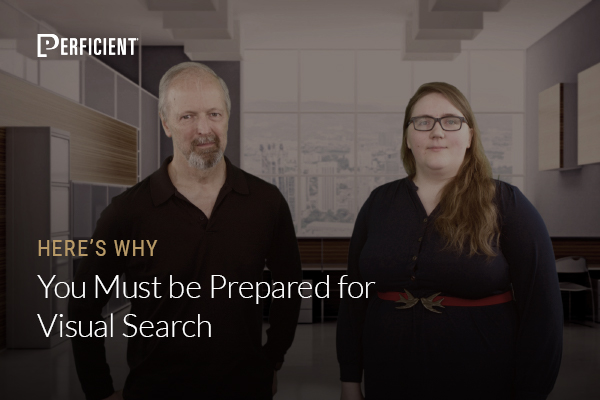Images SEO in visual search has been around for a long time, but why is it becoming more important to marketers?
In this episode of the award-winning Here’s Why digital marketing video series, Jess explains changes Google has made to their search result pages to show more visual content and how it may impact rankings.
Don’t miss a single episode of Here’s Why. Click the subscribe button below to be notified via email each time a new video is published.
Resources
- Google at 20: A Shift from Text to Images
- See all of our Here’s Why Videos | Subscribe to our YouTube Channel
Transcript
Eric: So, Jess, images SEO in visual search have been around for a long time. Why are they becoming more important now? What’s changed recently?
Jess: In a macro sense, the technology surrounding image hosting, image recognition, visual search, and that kind of thing has really improved. Image processing has become faster and you can get better quality images. And Google has noticed. In the “Next 20 Years of Google Search” post, Google signaled a switch from text to a more visual way of search. You can see this with their commitment to a much more visual mobile SERP (Search Engine Result Page).
Eric: A lot of these changes have happened over the last year. What changes have you seen most recently?
Jess: Some major changes have been with Google Lens, SERP experiments and changes, the Google Discover feed, and Google Collections.
Eric: Tell us about Google Lens.
Jess: Lens is Google’s built-in image recognition and search product. It’s accessible through the Google app and it lets you search for objects, image first. Say I want a version of a shirt—I can just take a picture of it on my phone and search for it online.
Eric: And we’ve also seen it in Discover and Collections. Both are services used by Google. Discover shows a feed of topics related to what the user’s interests are, and Collections lets the user save search results to boards. It’s kind of like Pinterest in that way. Both display search results with large visuals, titles, and then short amounts of text. They’re usually extremely visual-first, especially compared with traditional SERPs. So how is this showing up in the SERPs?
Jess: We’ve seen massive fluctuations in visuals in the SERP results. Image thumbnails, increased importance of images on the page, all that kind of thing. But the million-dollar question is, “Does this impact rankings?”
Eric: Probably. Maybe. Well, we don’t know directly, and we don’t know how much, especially when compared with other ranking factors. But recently, I did have a chance to talk with Bing’s Fabrice Canel, who confirmed the concept that a page with a high-quality relevant image on it could be seen as a higher-quality page, as a result. And as for Google, we know they also care about a user’s experience. Having relevant, well-optimized images can create a much better experience than just a big block of text. We do know that speed is a ranking factor and is clearly very important to Google. Won’t images slow down your page? Maybe that would impact rankings.
Jess: You can use good compression and next-gen image formats like WebP and JPEG 2000. But you can also think about the speed of the information making its way to the user. In that way, images are speed.
Eric: Can you explain?
Jess: You can explain what the Mona Lisa is in 1,000 words, or you can just show what the Mona Lisa looks like.
Eric: If images are important, how can publishers best implement images on their pages?
Jess: The usual rules for image optimization still apply. Make sure your images are a good size, that you use alt text correctly and accurately, and make sure that your images are a good quality. Beyond that, for speed, you can try implementing lazy loading while still making sure Googlebot can see your images. Try next-gen image formats and use unique images. And even run your images through the Google Image Recognition API to see if it sees what you want it to see.
Eric: Images can be useful in different ways for different niches. You have to think about how your images can be used, for users to find you—and then how they can help your user when they have found you. eCommerce sites, for example, should make sure their products are discoverable using a reverse image search. Financial pages should use images and visual storytelling to help their users understand their text, as well.
Jess: Yes, exactly. You can use images to stand out in the SERPs, help your users take advantage of visuals and take advantage of search features like Collections and Google Discovery.
Don’t miss a single episode of Here’s Why. Click the subscribe button below to be notified via email each time a new video is published.
See all of our Here’s Why Videos | Subscribe to our YouTube Channel

